Zalman HD-160 and Accompanying Products
by Joshua Buss on March 31, 2006 12:05 AM EST- Posted in
- Cases/Cooling/PSUs
CNPS-9500-LED
Initially, we were planning on saving our first look at the CNPS-9500 CPU cooler for a larger heat sink comparison article, but Zalman insisted that the cooler was a perfect fit for their new case and we were up to the task of boring out this claim.
With three discrete copper heat pipes and a relatively small base, the cooler is designed to whisk heat away from the core immediately and carry it around the rest of the unit where the wide fins with even separations can dissipate it efficiently.
A single 92mm fan forces air between the circularly-arranged fins for maximum effectiveness versus minimum air movement.
The base itself is certainly flat and polished well - trying to take a picture to show any imperfections in the near mirror-like finish proved rather fruitless.
Mounting equipment is included to mount the heatsink on Intel 478, and LGA-775, and all AMD 64 sockets, and relatively clear intructions make the process easy even compared to some stock heat sink installations.
The only step that some might consider annoying is the removing of the motherboard for the mounting of the backing plate, but this is to be expected with almost all performance CPU heat sinks, and the fact that the nuts are permanently attached to the plate makes this step much easier than many competing solutions.
Once the plates are anchored securely and the thermal compound applied, the heat sink assembly is held in place with a single piece of steel, which anchors with only two points, ensuring an even application of pressure between the heat sink and CPU surface.
Initially, we were planning on saving our first look at the CNPS-9500 CPU cooler for a larger heat sink comparison article, but Zalman insisted that the cooler was a perfect fit for their new case and we were up to the task of boring out this claim.
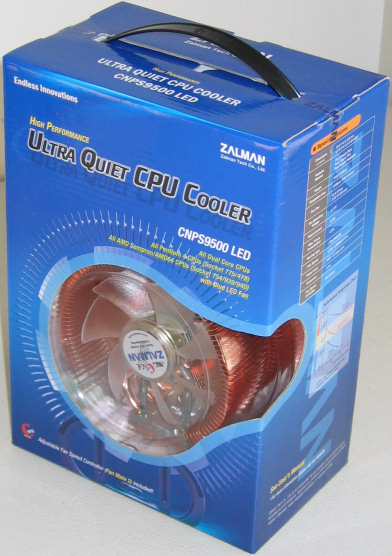
With three discrete copper heat pipes and a relatively small base, the cooler is designed to whisk heat away from the core immediately and carry it around the rest of the unit where the wide fins with even separations can dissipate it efficiently.
A single 92mm fan forces air between the circularly-arranged fins for maximum effectiveness versus minimum air movement.
The base itself is certainly flat and polished well - trying to take a picture to show any imperfections in the near mirror-like finish proved rather fruitless.
Mounting equipment is included to mount the heatsink on Intel 478, and LGA-775, and all AMD 64 sockets, and relatively clear intructions make the process easy even compared to some stock heat sink installations.
The only step that some might consider annoying is the removing of the motherboard for the mounting of the backing plate, but this is to be expected with almost all performance CPU heat sinks, and the fact that the nuts are permanently attached to the plate makes this step much easier than many competing solutions.
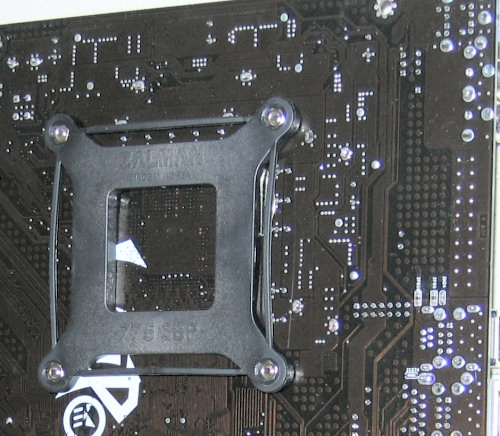
Once the plates are anchored securely and the thermal compound applied, the heat sink assembly is held in place with a single piece of steel, which anchors with only two points, ensuring an even application of pressure between the heat sink and CPU surface.


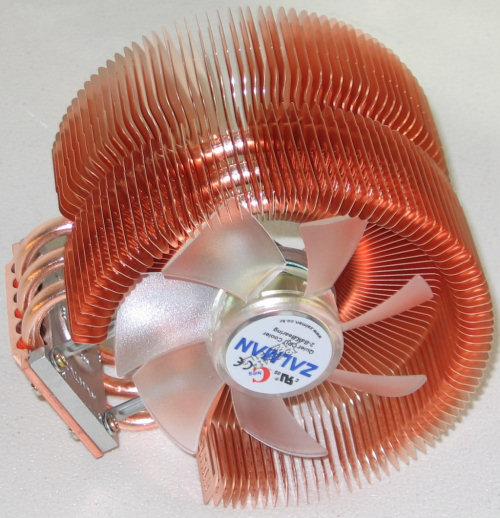
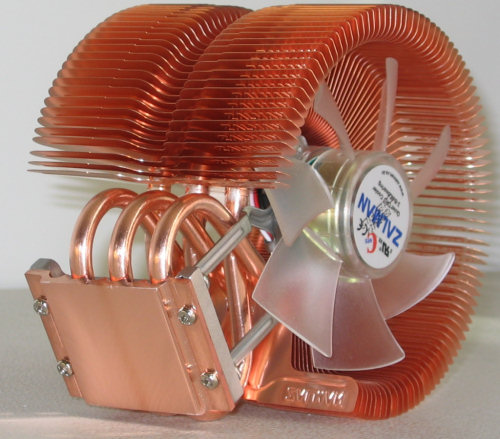
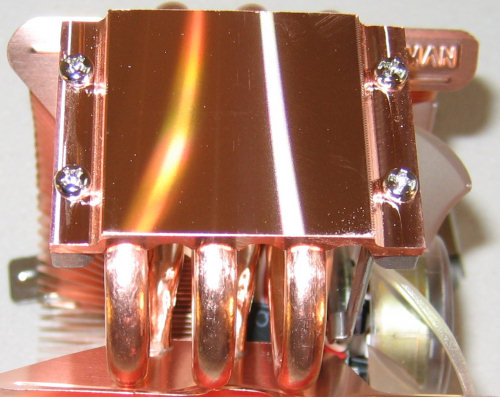
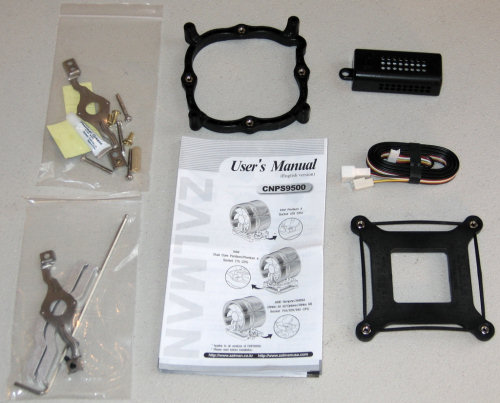
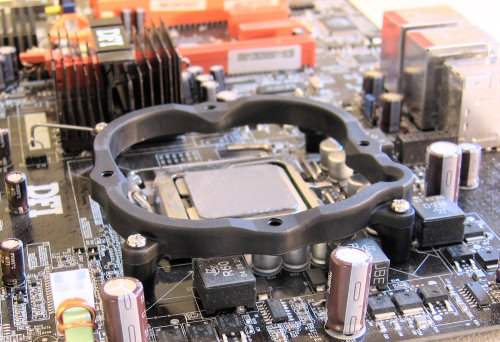
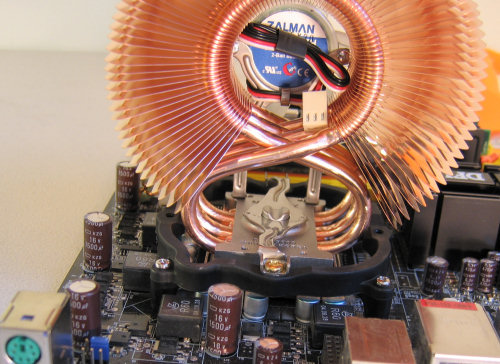








48 Comments
View All Comments
krwilsonn - Saturday, April 1, 2006 - link
"edit" Ok so it says the PSU is a separate product in the first paragraph. Nevermind my inquiry about that. Also, to the author, nice work on the JPEG's... no complaints here (???)nullpointerus - Saturday, April 1, 2006 - link
It's more cost efficient to get longer cables and move the HTPC away from the listening position(s). And you might even be able to find an external DVD burner to sit on your entertainment center and run a 10 ft. USB or Firewire cable to the HTPC.Fluffiette - Friday, March 31, 2006 - link
:-*logeater - Friday, March 31, 2006 - link
Worst. Case. Ever.logeater - Friday, March 31, 2006 - link
first...DigitalFreak - Friday, March 31, 2006 - link
not...creathir - Friday, March 31, 2006 - link
This thing is TOO big for my tastes.When I think HTPC, I think small, quiet, & compact. This sucker is about the size of a normal ATX case, laid on its side.
- Creathir
BornStar18 - Friday, March 31, 2006 - link
The advantage I see to this case is that it seems to be the same size as a reciever. That would mean that it wouldn't mess with your ability to stack devices like the half depth DVD players or narrow TiVos and VCRs. I see the size as a good thing.